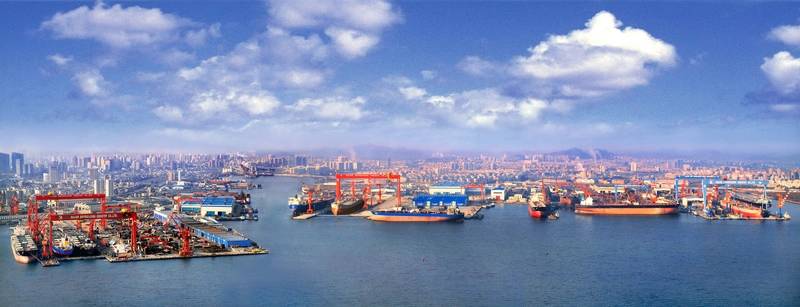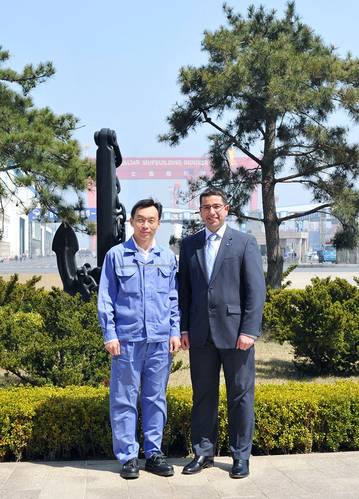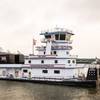‘Clear Advantage’ tanker design series is reported to reduce ballast requirements by 40%. Ready to be built, the designs combine operational and environmental performance improvements
Dalian Shipbuilding Industry China (DSIC), Dalian Ocean Shipping Co. and Lloyd’s Register, having completed a joint industry project to develop a minimum ballast ship VLCC, have continued to develop a further detailed designs to provide a series of reduced ballast Suezmax and Aframax tanker designs.
The Clear Advantage reduced ballast designs aim to provide performance improvements, including reductions in energy consumption during ballast passages; a reduction in ballast water treatment capacity – and the associated time, energy and cost penalties incurred in treating ballast water; and a reduction in the harmful effects of mud or silt.
Mud and silt are significant operational realities in China where oil import terminals are located on major rivers. Intake of river water ballast during cargo discharge can result in substantial volumes of mud or silt accumulating after operations leading to as much as 1,000 metric tons becoming stuck in a VLCC’s ballast water tanks. The combined impact of the loss of cargo capacity, the economic drain of transporting the mud during laden passages and the eventual cost of removing the muddy slurry as well as the strain on ballast water treatment systems have all been reduced in the new Clear Advantage designs. With Chinese oil imports growing, such improvements will have a welcome impact on environmental, operational and financial performance for tanker operators in Chinese ports and worldwide.
"This is another example of an initiative that moves the industry beyond concepts towards the reality of a design that can be built," commented Nick Brown, Lloyd’s Register’s Marine Chief Operating Officer. "It seems likely that, subject to market conditions, orders will soon be placed for these practical new designs."
DSIC’s President, Yu Fengping commented, "In close cooperation with the ship owners and with Lloyd's Register over the years, DSIC has taken the lead in completing the development of series of oil tankers with less ballast water Ballast water was significantly reduced in the design – by 40% – and ship performance is improved through optimized hull lines. CFD analysis and model tests have played a key role combined with adoption of effective energy saving devices, innovative tank division and structural design as well as better piping layout. These new designs are not only suitable for some of China’s silt-laden water ports but can significantly reduce energy consumption while in ballast condition, realizing energy yet further savings and emission reductions to bring competitive advantages to owners."















